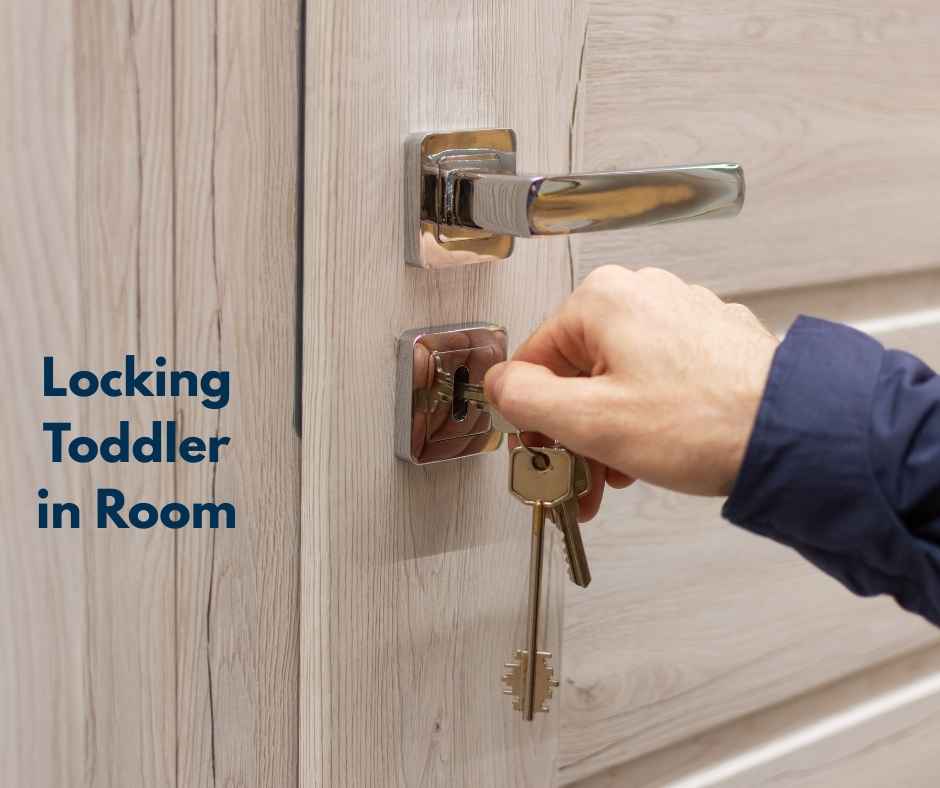Locking Toddler in Room at Night for Safety: Risks and Alternatives
As parents, your child’s safety is always your top priority. At night, when the house is quieter and everyone is asleep, the safety of your toddler can become a major concern. One practice some parents consider is locking their toddler in their room for safety. While this may seem like an easy solution, it brings up several questions about its impact on your child’s safety, well-being, and sense of independence.
In this article, we’ll dive into the safety and ethical implications of locking a toddler in their room at night and explore safer, more effective alternatives to keep your little one secure.
| Topic | Summary |
|---|---|
| Safety Considerations | Locking a toddler in their room may restrict movement but can lead to safety risks and emotional stress. |
| Alternative Safety Measures | Childproofing, door alarms, and enhanced supervision offer safer solutions without locking the room. |
| Creating a Safe Sleep Environment | Proper sleep setups, age-appropriate beds, and hazard-free rooms ensure safety while promoting independence. |
| Consulting Pediatricians | Seeking expert advice ensures tailored, practical safety strategies for your toddler. |
The Debate: Locking a Toddler in Room at Night for Safety
The idea of locking a toddler in their room stems from genuine concerns. Many parents fear that their toddler might wander off at night, potentially getting into dangerous situations such as stairs or kitchens. However, locking the door raises the question: is it worth compromising the child’s freedom to ensure their safety? It’s essential to weigh the risks of locking a child away with the potential emotional and developmental impacts.
The Risks of Locking a Toddler in Their Room
Locking a toddler in their room might seem like an effective measure to prevent them from wandering at night, but it can have several drawbacks:
-
Restricted Freedom: A toddler’s need for independence and exploration may be stifled, leading to feelings of isolation or anxiety.
-
Increased Danger in Emergencies: In the case of a fire, medical emergency, or another urgent situation, locked doors could delay access and increase risk.
-
Psychological Impact: Isolation during the night may cause emotional distress, potentially damaging the parent-child bond.
Safer Alternatives to Locking the Door
Instead of locking a toddler in their room at night, consider these safer and more effective alternatives that still prioritize your child’s safety:
Childproofing Your Home
-
Secure Windows and Doors
Ensure windows and doors are out of a toddler’s reach while keeping them accessible for adults in emergencies. -
Install Safety Gates at Stairs
Use gates to prevent your toddler from accessing dangerous areas like stairs, which could result in falls. -
Keep Hazardous Items Away
Store sharp objects, medicines, and cleaning supplies in secure cabinets to keep your toddler safe from accidental harm.
Utilizing Door Alarms
Door alarms are an excellent alternative to locking a toddler in their room. These alarms alert parents when the child attempts to leave their room. This method allows the child freedom within their space while ensuring the parent remains aware of any potential issues.
Enhancing Supervision with Technology
-
Baby Monitors
Baby monitors help parents keep an eye on their toddler, offering reassurance and the ability to respond quickly to any distress signals. -
Sleep Arrangements
Some parents opt to sleep closer to their toddler’s room, ensuring they can respond promptly in case of an emergency.
Creating a Safe Sleep Environment
Your toddler’s sleep environment plays a crucial role in their safety during the night. Here’s how to make their room safe while promoting healthy sleep habits:
-
Age-Appropriate Bed with Safety Rails
Use a toddler bed or a crib with safety rails to prevent falls during the night. -
Safe Bedding
Choose lightweight bedding and avoid heavy blankets that could cause suffocation or overheating. -
Comfortable Room Temperature
Keep the room temperature cool and comfortable for optimal sleep conditions. -
Install Soft Night Lights
Gentle night lights can help ease any fear of the dark while also allowing better visibility in an emergency.
Balancing Safety and Freedom
While locking a toddler in a room at night for safety may seem like an easy solution, it’s important to consider both the physical and emotional consequences. Providing a safe sleeping environment, childproofing your home, using door alarms, and maintaining vigilant supervision can offer more balanced alternatives.
Consulting With Pediatricians for Expert Guidance
Consulting a pediatrician or child safety expert can provide personalized advice tailored to your child’s specific needs. Pediatricians can guide parents on the best safety measures for toddlers, helping to ensure that the strategies you implement are both effective and age-appropriate.
A Holistic Approach to Toddler Safety at Night
Ensuring your toddler’s safety at night requires more than just locking their door. A comprehensive approach, which includes home childproofing, safety devices, effective supervision, and creating a secure sleeping environment, offers better protection without compromising their sense of freedom.
By taking proactive steps to childproof your home, investing in technology like door alarms and baby monitors, and ensuring your toddler’s sleep space is hazard-free, you can create a safe and secure environment for them. Consulting experts ensures you are using the best possible strategies for keeping your toddler safe at night.
